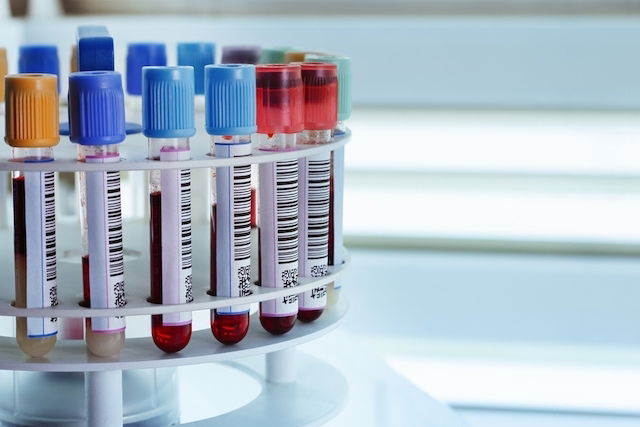A blood test for anemia can be ordered by your doctor to determine the amount of hemoglobin and red blood cells in your blood, as well as evaluate different characteristics of red blood cells, like their shape or size. Anemia is typically characterized by hemoglobin is below 119 g/L for women, and 136 g/L for men.
Hemoglobin levels are not the only parameter used for an anemia diagnosis, however. The doctor may also order other tests to determine why hemoglobin is low and to guide treatment.
Anemia can also be caused by low iron levels, which be assessed by checking ferritin levels in the blood. Anemia with normal ferritin levels may prompt further investigation with electrophoresis tests or even vitamin B12 and folic acid levels to determine the underlying cause of anemia.

What blood tests can diagnose anemia?
Blood tests for anemia that your doctor may order include:
1. CBC
A CBC (complete blood count) is one of the main tests used to diagnose anemia. Generally, anemia is confirmed when hemoglobin levels are as follows:
- Men: Less than 136 g/L
- Women: Less than 119 g/L
The CBC also looks at characteristics of the red blood cells, like the quantity available and their size. Although the CBC is the main test for confirming anemia, other tests are needed to identify the type of anemia present, so that the proper treatment is initiated. Learn more about the symptoms of low hemoglobin that patients may present with.
2. Blood smear
A blood smear is normally done together with the complete blood count. It involves analyzing the blood cells (including the red blood cells) under a microscope to determine their size, shape, number and overall appearance. The blood smear helps with the diagnosis of sickle cell anemia, thalassemia, megaloblastic anemia and other hematological abnormalities.
3. Electrophoresis
This test is used to identify the different types of hemoglobin circulating in the blood. This is useful for diagnosing sickle cell disease and thalassemia.
It is important that electrophoresis tests are evaluated by the doctor together with the CBC, blood smear and the patient’s presenting symptoms.
4. Reticulocyte count
A reticulocyte count is an exam that is ordered with a CBC. It looks at the presence of reticulocytes, which are "young" blood cells and evaluates whether the bone marrow is functioning properly. This test is used to diagnose aplastic anemia.
5. Iron, ferritin, and transferrin
Iron, ferritin and transferrin levels are important for the diagnosis of iron deficiency anemia. These tests are ordered together with the CBC, as one of the most common causes of low hemoglobin is low iron levels.
6. Vitamin B12
Vitamin B12 levels can be ordered as a way to investigate for pernicious anemia, or anemia secondary to low B12 levels. This test is ordered when hemoglobin levels and overall blood cell levels are low, and if blood cells are larger than normal.
7. Bone marrow biopsy
A bone marrow biopsy is a test that is ordered when CBC and blood smear results are abnormal and may suggest bone marrow dysfunction. Because this test is more invasive, the biopsy is only indicated after completing other blood tests to rule out the other types of anemia.
8. Other tests
Other tests that the doctor may order to diagnose anemia and identify the type and cause may include:
- Stool testing
- Bilirubin levels
- Copper levels
- Liver and kidney function tests
It is important for blood tests to be evaluated by the ordering physician so that the appropriate treatment can be initiated. Having just a low hemoglobin level is not sufficient for diagnosing anemia, as complementary tests should be order to determine the underlying cause.






























